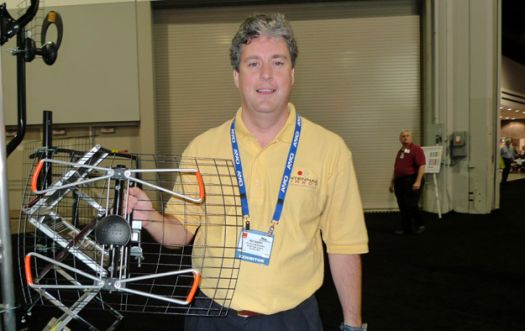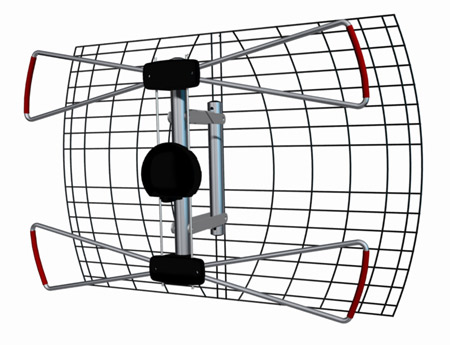Over a year after the digital transition and the elimination of analog television broadcasts, Antennas Direct president Richard Schneider remains bullish on the antenna business. "Some thought the market for over-the-air antennas would dry up after the transition as anyone who needed an antenna already had one, and others may have migrated to pay TV. But we've seen 110% growth over the past year, with no end in sight."
It seems that in a tight economy, more and more consumers are "cutting the cable" in order to save money. Why pay for TV service when you can get it for free? Any television that calls itself an "HDTV" in the US is required to have an ATSC tuner on board, which means owners can receive digital TV broadcasts in exceptionally high quality with nothing more than a well-placed antenna. Ah, but there's a catch. In order to pull in the new DTV and HDTV broadcasts, some consumers will need a better, more powerful antenna than they had before.
Older analog stations could be received by many viewers with an inexpensive pair of rabbit ears. Analog transmissions were typically much more powerful than their digital counterparts, and this means it can be trickier for those who are a few miles away or more from the broadcasting towers to receive the new digital channels. But Schneider's company has a solution for these people.

At CEDIA Expo in Atlanta last week, Antennas Direct unveiled their latest entries into the HDTV antenna market: new improved versions of the popular DB2 (2 element) and DB4 (4 element) HDTV antennas. These are both designed for outdoor or in-attic use, combining precision-designed bowtie elements with a reflector for high front to back ratio (greater than 16 dB) and high gain. The DB2 is rated for 12.2 dBi of gain while the larger DB4 is rated for 15.1 dBi of gain. These high gain directional antennas are ideal for those on the fringes of reception -- up to 45 miles away from the broadcast tower with the DB2; up to 60 miles away with the DB4. The antenna's design is optimized for the most commonly used spectrum for digital TV broadcasts, namely UHF -- the former channels 14 to 69 on the UHF band.

Schneider said that the unit's design allows it to reach into the top of the upper VHF band as well, so if some of the digital channels in your area are being broadcast in what used to be analog channels 7 to 13, then these antennas may be all you need. "We still recommend that customers in remote areas combine a dedicated upper VHF antenna, like the ClearStream 5 with a UHF antenna, but those who are closer to the towers should get good results with the DB2 or DB4." The improved versions of the DB2 ($49.99) and DB4 ($69.99) will be available later this year, with tentative plans for an improved DB8 (with a whopping 8 elements) to follow.
The company is also branching out into other frequencies with antenna products soon to be released for both Wi-Fi and cell phone bands. The Wi-Fi antennas will take advantage of a home's pre-existing coax wiring to route a Wi-Fi network's signal from your wireless router to anywhere in the home that has a coax cable jack. A replacement wall plate in the remote room still offers the standard coax connection, for pass-through of cable, satellite or over-the-air TV, but it also includes a small Wi-Fi antenna. This effectively creates a powerful wireless hot spot wherever you need it in your home. The Wi-Fi repeater kit will come with a diplexer, for connection to your Wireless router, plus 4 wall plates ($149) or 8 wall plates ($199).
The company also plans to release a cell phone repeater antenna to boost cell reception in weak spots in your home or office. Pricing of the cell repeater antenna has not yet been determined. Expect to see the Wi-Fi and cell band antennas in early 2011.
Where to Buy Antennas Direct Antennas:
More Information: